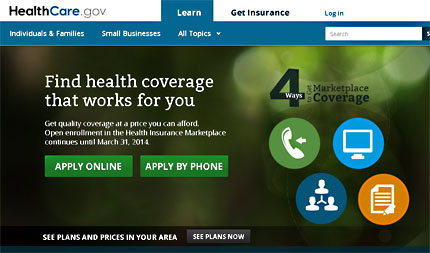 The open enrollment period for Obamacare is finally (almost) over, and today the White House announced the final figures for signups via the exchanges:
The open enrollment period for Obamacare is finally (almost) over, and today the White House announced the final figures for signups via the exchanges:
8 million people signed up for private insurance in the Health Insurance Marketplace. For states that have Federally-Facilitated Marketplaces, 35 percent of those who signed up are under 35 years old, and 28 percent are between 18 and 34 years old, virtually the same youth percentage that signed up in Massachusetts in its first year of health reform.
That’s a little better than I expected. I was figuring the final number would be around 7.7 million or so. We Americans sure do like to procrastinate, don’t we?
Anyway, once some of these new enrollees drop out for not paying their premiums, the final number will be around 7 million, which matches the CBO’s original estimate—the one they made before the website debacle. That’s pretty amazing. It suggests that either the CBO was overly pessimistic or else that the website problems really didn’t have any effect at all. I suppose the latter is plausible if you assume that hardly anyone was ever going to sign up in the first couple of months anyway.
And the 28 percent number for young enrollees is pretty good too. It’s below the administration’s goal, but Jon Cohn points out that what really matters is whether it matches what insurance companies expected:
The worry has always been that older and sicker people would sign up in unusually high numbers, forcing insurers to raise their prices next year and beyond.
But insurance companies didn’t expect young people to sign up in proportion to their numbers in the population. They knew participation would be a bit lower and they set premiums accordingly. Only company officials know exactly what they were projecting—that’s proprietary information—but one good metric is the signup rate in Massachusetts, in 2007, when that state had open enrollment for its version of the same reforms. According to information provided by Jonathan Gruber, the MIT economist and reform architect, 28.3 percent of Massachusetts enrollees were ages 19 to 34, a comparable age group.
So what were insurance companies expecting? As Cohn says, we don’t know for sure, but there’s good reason to think that it was around 28 percent. First, there’s the Massachusetts precedent. And second, we learned yesterday that insurance companies are now expected to raise premiums a modest 7 percent next year. This suggests that that the age and health profile of exchange enrollees is pretty close to their projections.
All in all, another day of pretty good news for Obamacare.













